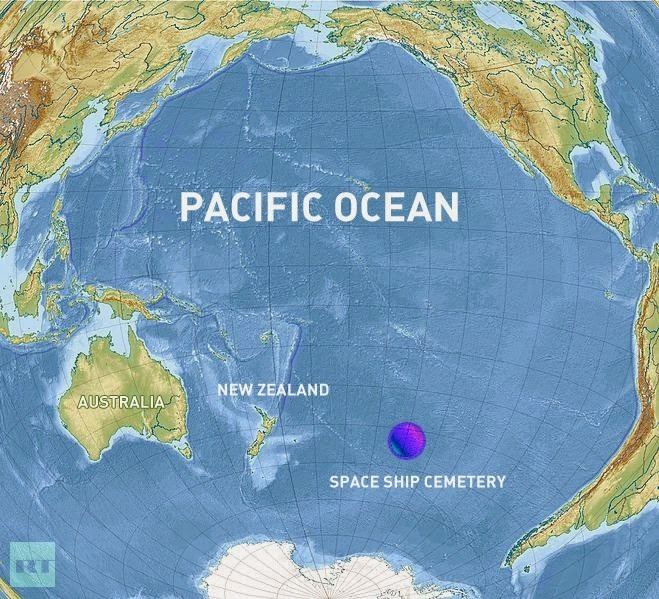Elevation 0 cm | ||
 | ||
Pacific tidal pool google project spacecraft cemetery killer algae ocean volcanoes jsnip4
The so-called Spacecraft Cemetery is an area in the southern Pacific Ocean 3900 km southeast of Wellington, New Zealand, where spacecraft, notably the defunct Mir space station and waste-filled Progress cargo ships are and have been routinely deposited. The area corresponds with the "Point Nemo" oceanic pole of inaccessibility; the area of ocean furthest from land. It has been chosen for its remoteness, so as not to endanger or harm human and oceanic life. The nearest land is approximately 1,500 miles away from the cemetery.
Contents
- Pacific tidal pool google project spacecraft cemetery killer algae ocean volcanoes jsnip4
- Reentry documentation
- References

Other spacecraft that routinely use the South Pacific re-entry location include several other unmanned resupply spacecraft to the ISS: the Japanese H-II Transfer Vehicle, and the European Space Agency Automated Transfer Vehicle (ATV). A total of more than 263 spacecraft were disposed of in this area between 1971 and 2016.

Reentry documentation

A particularly well-documented reentry and breakup over the South Pacific was recorded by a large team of NASA and ESA space agency personnel in September 2008, following the first mission of the ESA unmanned resupply spacecraft—the Automated Transfer Vehicle Jules Verne—to the International Space Station (ISS) in March 2008.
On 5 September 2008, Jules Verne un-docked from the ISS and maneuvered to an orbital position 5 kilometres (3.1 mi) below the ISS. It remained in that orbit until the night of 29 September. At 10:00:27 UTC, Jules Verne started its first de-orbit burn of 6 minutes, followed by a second burn of 15 minutes at 12:58:18 UTC. At 13:31 GMT, Jules Verne re-entered the atmosphere at an altitude of 120 kilometres (75 mi), and then completed its destructive re-entry as planned over the following 12 minutes, depositing debris in the South Pacific Ocean southwest of Tahiti. This was recorded with video and still photography at night by two aircraft flying over the South Pacific for purposes of data gathering, with reentry and breakup telemetry data from the craft provided by a Reentry Breakup Recorder and collected by remote communication receivers.
The NASA documentary of the project is in the gallery below.


